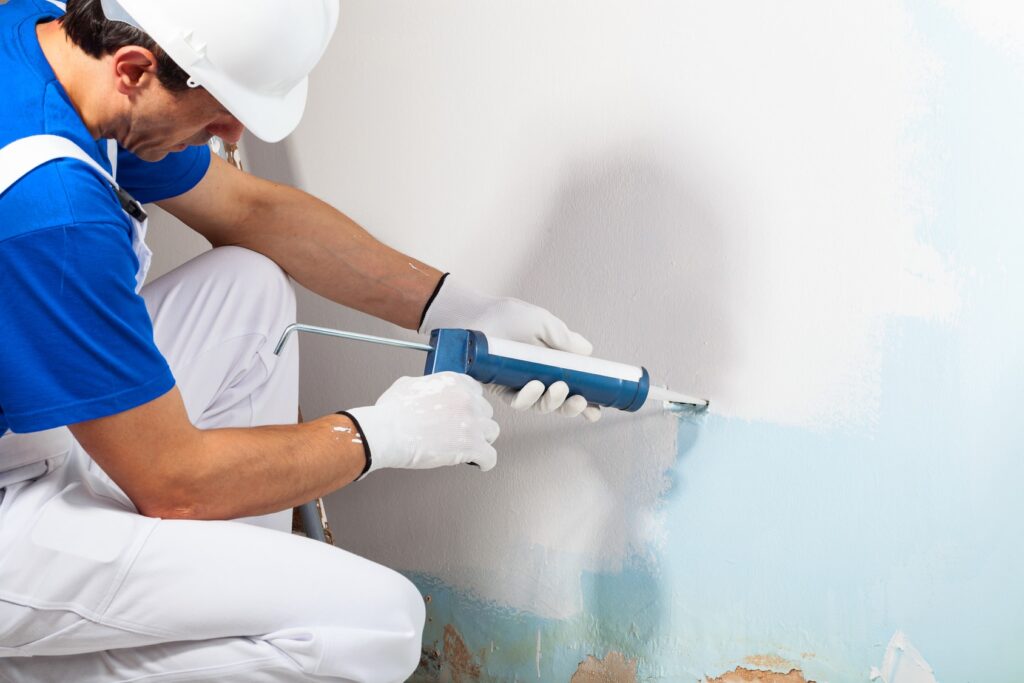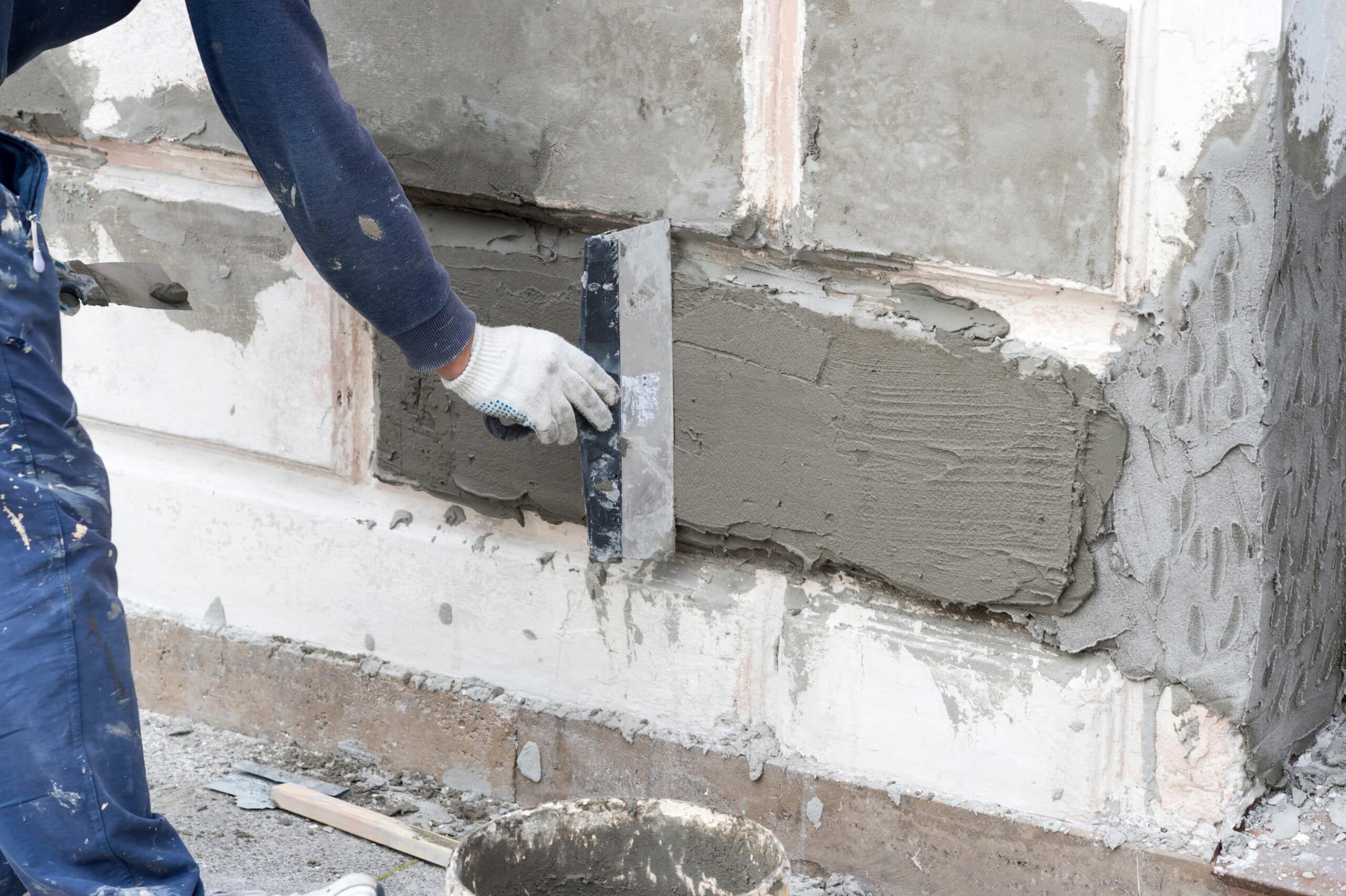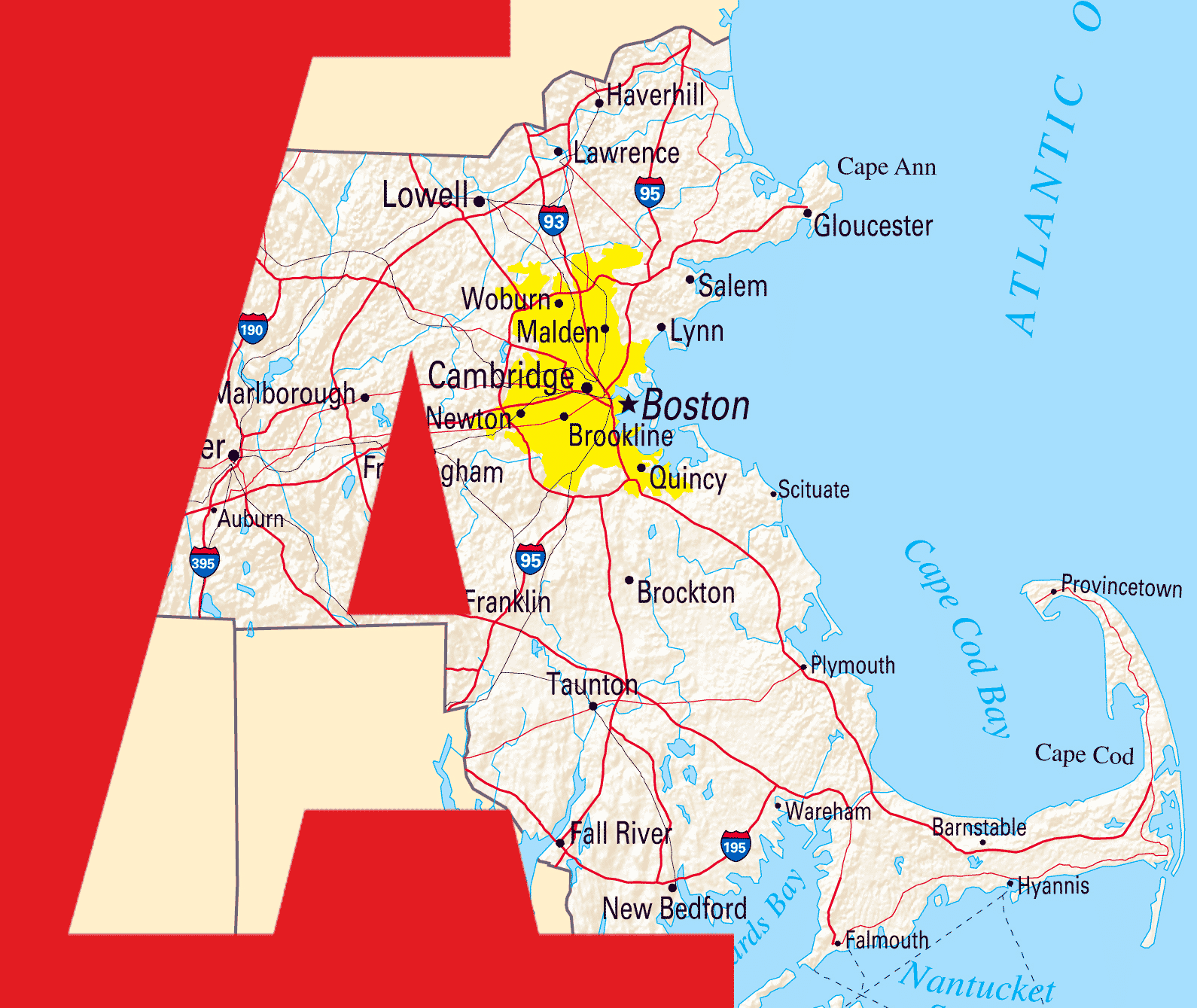BUILDING BASICS
SEALANTS
The use of sealants (caulking) has expanded as façade construction has evolved and new cladding materials have become available. The substrate, movement requirements and aesthetics will determine what type of sealant is best for your restoration project.
CONTACT US
ABOUT SEALANTS
Typical Applications Requiring Sealants
- Joints between stone veneer, concrete, or metal cladding panels
- Stone to flashing points, masonry expansion, and coping joints
- Joints at window and door perimeters and glass and glazing perimeters
- Joints in horizontal surfaces such as plazas and terraces
While the majority of joints are simple butt joints, special joints developed for new applications include fillet joints, lap joints, glazing beads, and glazing heel beads.
Most high performance sealants used today are silicone or polyurethane-based. However, older buildings may contain polysulfide and acrylic, butyl, or even drying oil-based compounds.

Signs of Sealant Failure
Four general conditions are usually evaluated in assessing sealant failure:
- Adhesion or bond of the sealant to the substrate
- Cohesion or internal integrity of the sealant
- Elasticity
- Weathering
Loss of adhesion results in a separation of the sealant from the substrate. This is usually visible in openings along either side of the joint. Loss of cohesion is evidenced by cracking parallel to the joint interface. Loss of elasticity can contribute to adhesive or cohesive failure. This is indicated by the inability of the sealant to recover after deformation, and especially by an increased hardness of the material. Weathering is indicated by chalking, discoloration, random or alligator cracking, wrinkling, erosion, or excessive softening of the sealant surface.
Factors that contribute to these types of failure include improper joint design or improper sealant use. Sealant characteristics for modules of elasticity, elongation, and the expected movement of the substrate must be taken into account in selecting the sealant and designing the proper width of the sealant joint.
Proper selection of the sealant for compatibility to the substrate must be evaluated. If the substrate varies on either side of the joint, different surface preparation may be required for each side.
Types Of Sealants
Certain types of sealants cannot bond to other sealants. For example, sealants other than silicone are rarely capable of providing durable bonds to existing silicone. On the other hand, silicones often will not cure properly when installed over isobutylene sealants. It is advisable to avoid installing sealant over an existing sealant, as this usually results in poor geometry for the new sealant joint and limited adhesion to the substrate.
Many sealants cannot bond to often used fluoropolymer-based architectural finishes without the use of a primer. Solvent-based sealant placed over thermoplastic sealants can soften or partially dissolve the sealant, causing partial failure within the paint or at the paint/substrate interface. Where light-colored sealants of any type are applied over neoprene gaskets, the oil in the gasket may stain the sealants. Staining of the adjacent substrate is another significant problem associated with certain sealants.
Urethane Sealants
Urethanes are either one-component (moisture-curing) or two-component materials based on the reaction between isocyanates and hydroxyl components. They are most commonly used to seal porous surfaces in high-movement joints. Urethanes typically have about 25 percent joint movement capability and are commonly used for cladding joints.
Curing at high temperatures (e.g, 120 degrees F) can cause some urethanes to prematurely degrade in ultraviolet light, leading to severe reversion. Under ambient air temperatures of 80 to 90 degrees F, dark-colored substrates exposed to direct sunlight can reach temperatures exceeding 160 degrees F. When some polyurethane sealants are cured at such temperatures, they may appear to have cured normally, but continued exposure to heat and ultraviolet light, may cause them to flow and become bubbled or gummy at lower levels.
One-component urethanes cure by reacting with moisture in the air. Some are made with “moisture scavengers” such as calcium oxide, which serve to inhibit set until placement occurs. If particles of the scavenger are too large and are exposed on the surface, they can react with rainwater and cause stains on window frames and glass.
Problems with multi-component urethanes are usually related to improper mixing. If mixing is incomplete, portions of the sealant will be fluid or uncured. Incomplete curing can also be the result of using materials beyond their shelf life, or under certain circumstances, from improper formulation.
Silicone Sealants
Silicone sealants are based on alternating silicon-oxygen atoms. Most field-applied silicones are one-component products. Some are acetoxy (acid) cured and some are alcohol (neutral) cured. Acid-cure silicones should not be used on acid-sensitive substrates such as limestone, marble, and masonry. Silicone sealants are most commonly used on non-porous surfaces in high-movement joints with capability ranges from -50 to +100 percent. Typical applications include cladding joints where staining is not a concern, and metal and glass substrates.
The most common problem with silicone sealants is staining. Staining is evidenced by dirt accumulation on the sealant itself, or by migration of the sealant plasticizer into the adjacent substrate. Some substrates are particularly vulnerable to migration and staining from silicone sealants. Silicone sealant installed on glazing may adhere poorly if the glass surface is contaminated.
Silicone sealants can fail if water gets behind the sealant in open-cell backer rod. Many silicones do not have good long-term adhesion when continually wet or in standing water. Testing should be done in wet and dry conditions.
Other Sealant Types
Polysulfide
Polysulfide sealants are based on polymers containing sulfur, and typically have a characteristic sulfide odor. Some older polysulfide sealants were plasticized with PCBs that are now considered potentially carcinogenic.
Polysulfide sealants are typically limited to use for cladding joints with potential use for joints in submerged applications.
Acrylic
Acrylic sealants are based on thermoplastic resins formed by polymerization of the esters of acrylic acid. They offer h3 adhesion characteristics and limited movement capability. They are typically used for low-movement joints in small-scale construction.
Latex, Styrene, Butadiene, And Acrylic Terpolymers
These types of sealants are based on a colloidal suspension of rubber resin (synthetic or natural) in water. Some are modified with small amounts silicone. Like acrylic compounds, these sealants have limited movement capability and are typically used for low-movement joints in small-scale construction.
Polyisobutylene
Polyisobutylene sealants are non-elastic glazing materials based on petroleum hydrocarbons. They are typically used for glazing joints, splice seals in window frame units, and as the primary seal in insulating glass units.
COMBINING BRICK AND STEEL
The combination of brick and steel can create considerable differential motion. Because the flexural strength of steel is greater than the tensile strength of brick, building sway will crack the brick if not kept within acceptable limits. This problem becomes acute when brick veneer is placed over steel studs. Further, because steel tends to deform somewhat under its own weight, while brick steadily expands, insufficient wall expansion joints can result in crushed brick.
REPOINTING
Loose brick and water leakage are signs that a mortar bond is failing and that repointing may be necessary. Removal of existing mortar is the most critical step in the repointing process.
Standard industry practice is to remove mortar by mechanically grinding the brick joints with special diamond blades sized to the width of the joint. The depth of the cutting should be a minimum of 3/4” deep. Then the brick and joint should be cleaned and dampened. Depending on the depth of the joint, new mortar should then be applied in layers to ensure that it bonds well with the existing mortar and brickwork.
PAVERS
Brick pavers are commonly used as an alternative to plain concrete or asphalt in a variety of exterior hardscaping applications, including walkways, patios and driveways. Available in a variety of shapes, brick pavers resist to fading from the sun and deterioration from long-term exposure to the elements and do not require a seal coat to prevent staining. Their closed pores create an almost non-permeable surface.
RECENT BLOG POSTS
Proudly Serving Greater Boston
& Eastern Massachusetts

Wet Weather and Commercial Masonry Restoration in MA
Here’s a closer look at how wet weather and prolonged moisture affect commercial masonry restoration in MA.
Read More
Concrete vs. Brick Restoration Part 2: Differences
To better understand the process and importance of concrete restoration in Massachusetts, let’s take a look at how it differs from brick restoration.
Read More
